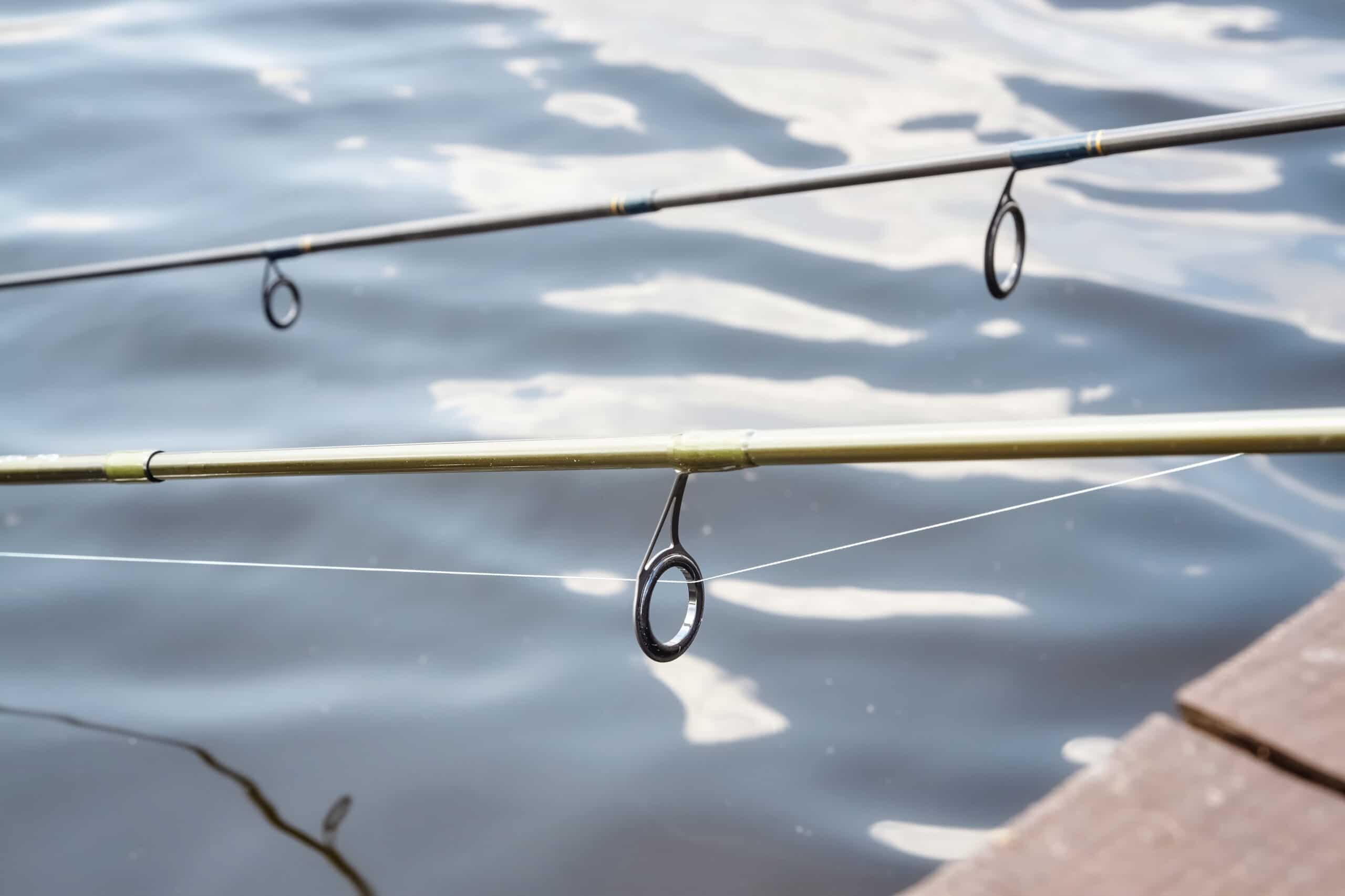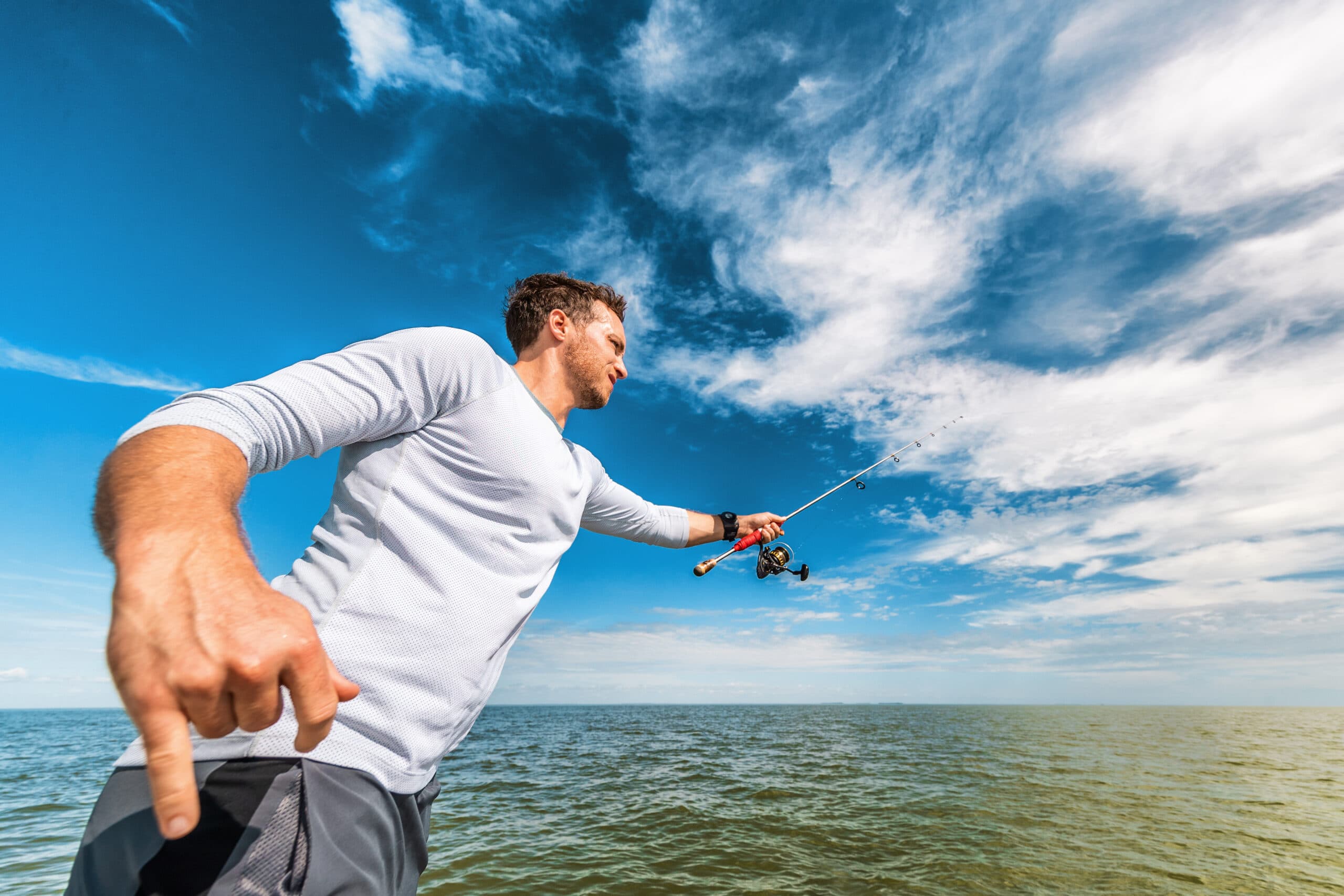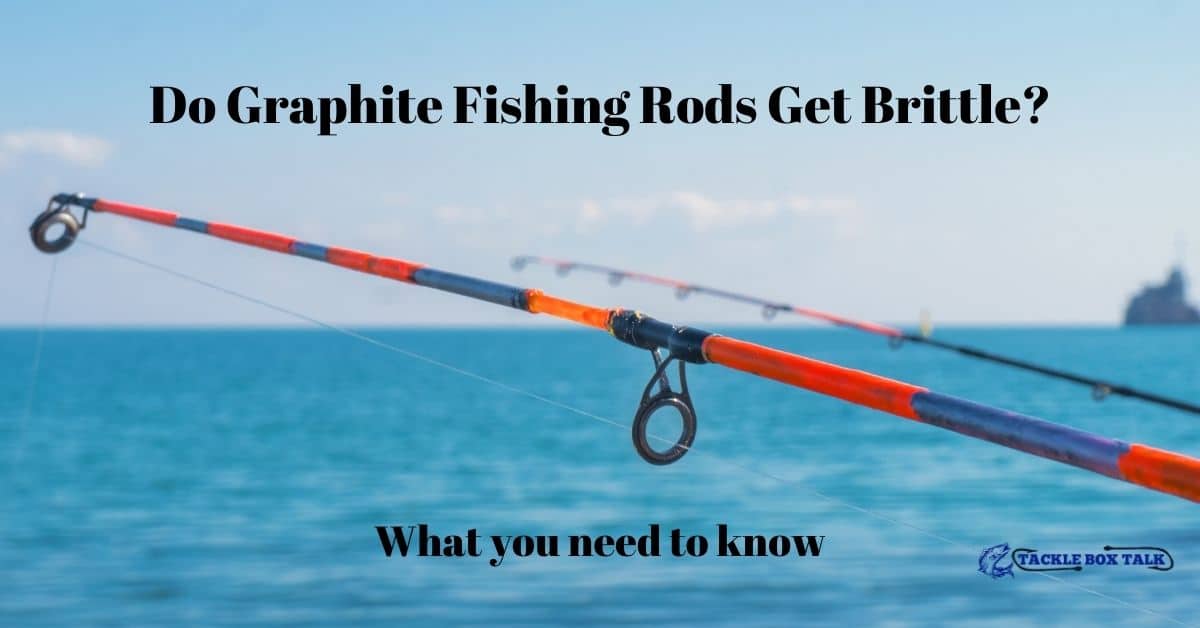If you’re searching for a new rod, it’s a good idea to know if graphite fishing rods get brittle. With the years of experience I have fished with graphite fishing rods, and a variety of other rod types, I thought I’d get some research to back up my experience and share it with you today.
All fishing rods, not just graphite, do wear out. No matter what the material, fiberglass, graphite, bamboo, or metal, fishing rods will eventually get brittle and may soon be rendered unusable. However, it usually takes them decades to fully wear out.
If you want to know more about the reasons for wearing out and steps to delay the process, read on.
How Do I Preserve My Graphite Fishing Rod?
Since all fishing rods, not just graphite wear out, it is best to keep them as pristine as possible. Though it is next to impossible to keep your rod in its brand new condition unconditionally, it is possible to prolong its lifespan. There are many ways to do this, let us explore each one of them.
Use Polish Such As Pledge.
The blank is an essential part of a fishing rod, even on graphite ones. They need to be sturdy and always be kept in pristine condition. One of the advised ways to do this is to apply polish such as Pledge a few times per year.
Pledge can help your fishing rod’s blank be clean, shining, and repel water. Most water, especially in oceans and rivers, is not just water. Most of the water in these bodies of water is full of impurities and may contain chemicals and minerals that may corrode your fishing rod blank.
Although graphite fishing rods are made to withstand a bit of water, they cannot withstand corrosives. Keeping your fishing rod’s blanks safe and dry is an excellent precaution to delay any signs of wearing out.
Actively Clean The Guides

With its relatively small sizes, guides are most of the time overlooked despite their tendency to undergo abuse. Since the guides hold the lines, it is essential to clean them frequently to prevent any foreign matter from interfering with your lines.
Even foreign matter that may seem harmless such as dirt, vegetation, and unidentifiable pieces of plastic, needs to be removed as they may build up later on and significantly affect your line.
What you will need to do is apply lubricants explicitly made for fishing rod guides. By doing this, you will mitigate any build-up of foreign matter meanwhile keeping your lines lubricated at the same time.
Keep The Handles Clean
The most handled part of the fishing rod is, well, the handle. This frequent handling is why it is imperative to keep this part as pristine as possible, especially since having a bad handle means that you will have a not-so-good experience when fishing.
Holding the handle in the best condition can also help you better grip and not risk your fishing rod slipping out of your hands.
Using a face towel or just any towel really can help. All you need to do is wet the towel with a disinfectant, then wipe it. Afterward, use a dry towel and wipe it off the surface again.
How Should I Store My Graphite Fishing Rod?
One of the most important things to know about keeping your graphite fishing rod from going brittle is storing it properly. One of the most obvious ways to store your rod is to use rod sleeves. Rod sleeves are not only cheap, but they also provide enough protection for your road to delay its wearing-off process.
Another thing that is important to know when storing a rod is to store them vertically. Storing them this way is recommended so that the graphite fishing rod does not take up more horizontal space and run the risk of being run over or being broken into two.
Another argument one might consider is that storing your fishing rod horizontally means that you can prevent the blanks from being bent. Over time, storing your fishing rod horizontally may promote a permanent bent that will not go away.
Keep Your Boat Clutter Free
While fishing out on the open sea, be sure that your boat is organized and clean. Keeping your boat organized helps you lessen the risk of accidental breakage, especially to your graphite fishing rod.
Another risk caused by a disorganized boat environment is the possibility of your rod being hammered by heavy objects around your boat.
When you are on a bank, please do not put your graphite fishing rod just anywhere. It runs them a risk of being walked on.
Fishing In A Way That Is Good For Your Graphite Fishing Rod

If there is a right way to store your rod, there is also a correct method to fish in a way that your rod does not undergo extra stress than it should have been in the first place. Knowing how to cast properly and how to free lures are essential to keep your rod in its pristine condition as possible.
While casting your rod, it is essential to do it where any overhead fauna or flora is not available. Do not risk your rod getting caught up by trees. It may damage your graphite fishing rod and degrade it substantially.
When your fishing rod hits a tree, it can cause heavy stress to the blank. In intense situations, such as while fighting a fish, the stress on the blank may take effect and break.
Don’t High Stick Your Rod
A crucial thing to remember is to never high stick while fighting a fish or while setting the hook. High sticking is the action where you raise your rod at more than a 90-degree angle. High sticking provides extra stress and strain to the rod, which may result in breakage.
One of the most common causes of breakage is the incorrect method of freeing a snagged lure. Doing the incorrect methods to free a lure will cause your rod to act like a spring and snap. Pulling harder is NOT the correct method.
To free your lure, put your rod in a 180-degree position with the fish and pull on it. Do this while firmly cupping the spinning reel spool with your palm to take out the strain from the rod. Do mind the lure that will be coming in your direction after being bent, releasing the energy from earlier.
Three Most Asked Questions About Graphite Fishing Rods And Fishing Rods In General
What is the difference between carbon and graphite fishing rods?
Graphite and carbon are both based on carbon, so there is virtually no difference. While graphite is carbon, carbon fiber is a form of graphite.
What is stronger, graphite (carbon fiber) or fiberglass?
Carbon fiber offers more tensile strength compared to fiberglass. However, fiberglass is considered to be more flexible. This inflexibility would mean that for bending, carbon fiber’s rigidness may affect its overall durability.
To keep your graphite fishing rods from being easily broken, avoid increased stress due to bending. It ensures that your graphite fishing rod will also degrade longer.
Is fiberglass heavier than graphite?
Carbon fiber or graphite is known to be 15% lighter than fiberglass.


Cory Haasnoot
Cory is a content writer-editor and founder of Tackle Box Talk. Favorite Quote: "Give a man a fish, and you feed him for a day. Teach a man to fish, and you feed him for a lifetime."